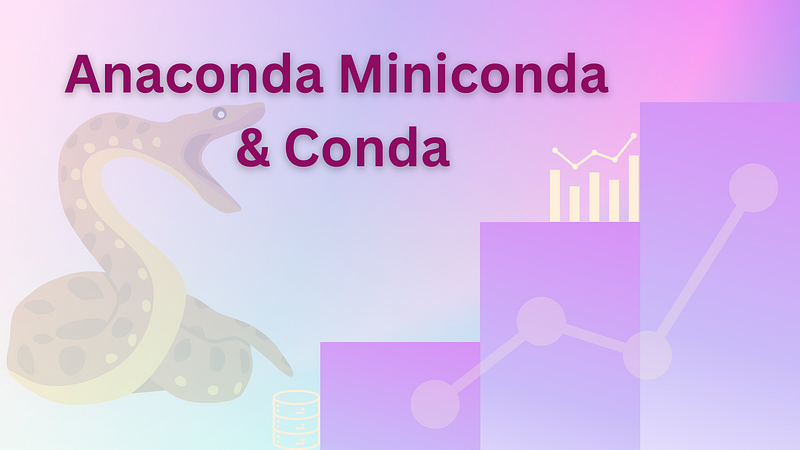Anaconda, Miniconda And Conda. What are these?
Hey there, fellow data enthusiasts! Have you ever stumbled upon words like Anaconda, Miniconda, and Conda while exploring the exciting…

Hey there, fellow data enthusiasts! Have you ever stumbled upon words like Anaconda, Miniconda, and Conda while exploring the exciting world of data science? They might sound like fancy snake names, but don’t worry, they’re actually your best friends in this data adventure! Let’s break them down into easy-to-understand terms.
Imagine you’re building a cool robot (machine learning project!) You’ll need a bunch of tools (software packages) like screwdrivers (NumPy for calculations), pliers (Pandas for data wrangling), and maybe even a tiny welder (TensorFlow for deep learning).
- Anaconda is like a giant hardware store overflowing with every single tool imaginable (hundreds of data science packages). It’s awesome because you have everything you might ever need, but it can be a bit overwhelming, and downloading all those tools can take a long time (around 3GB!). Think of it as having a whole toolbox, even if you only use a few wrenches at first.
- Miniconda is a more focused workbench. It comes with the essentials — Python (the building blocks for your robot) and a few other basic tools. It’s smaller and downloads much faster (around 200MB), perfect if you just want to get started tinkering. Think of it like having a small kit with only the most-needed tools.
Now, what about Conda? Think of Conda as your super helpful personal assistant in this workshop! It can,
- Help you set up your workbench — This means installing Miniconda or Anaconda on your computer.
- Order new tools when you need them — You can use Conda to download and install extra packages like fancy laser cutters (more advanced libraries) for your robot project.
- Make a copy of your tools to share — If you want to collaborate with a friend on a robot, Conda can help you share your exact set of tools (environment) with them.
Anaconda and Miniconda are called software distributions, which means they’re collections of pre-built tools specifically designed for data science. Conda itself is a package manager, the super assistant who keeps track of all your tools and helps you install or remove them as needed.
Confusing, right? Don’t worry! The important thing to remember is that:
- Both Anaconda and Miniconda come with Conda, your helpful assistant.
- Miniconda starts with just the essentials, while Anaconda has almost every tool imaginable.
- You can use Conda to install extra tools on both Miniconda and Anaconda.
So, which one should you choose? If you’re new to data science, Miniconda is a great way to start because it’s lightweight and gets you going quickly. As you explore more, you can always use Conda to install additional tools. Anaconda is a good option if you want everything at your fingertips from the beginning, but be prepared for a larger download.
The world of data science can be full of new terms, but with a little explanation, they become your friends! Now that you understand Anaconda, Miniconda, and Conda, you’re well on your way to building amazing data-driven projects. Go forth and explore!